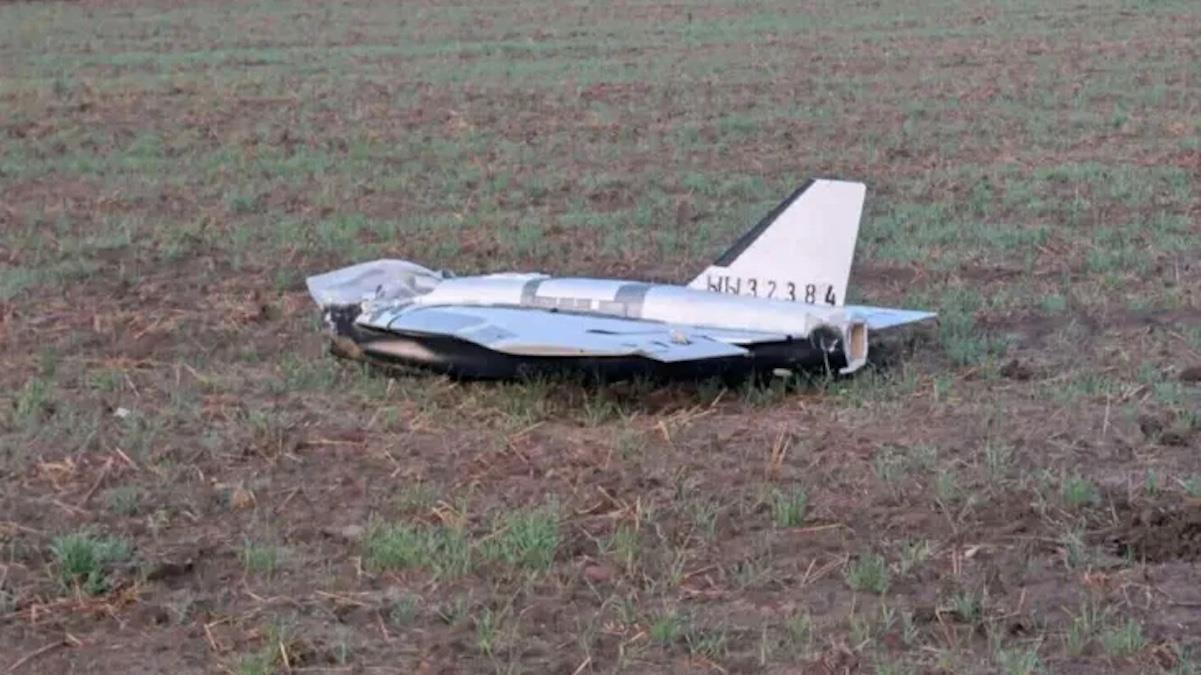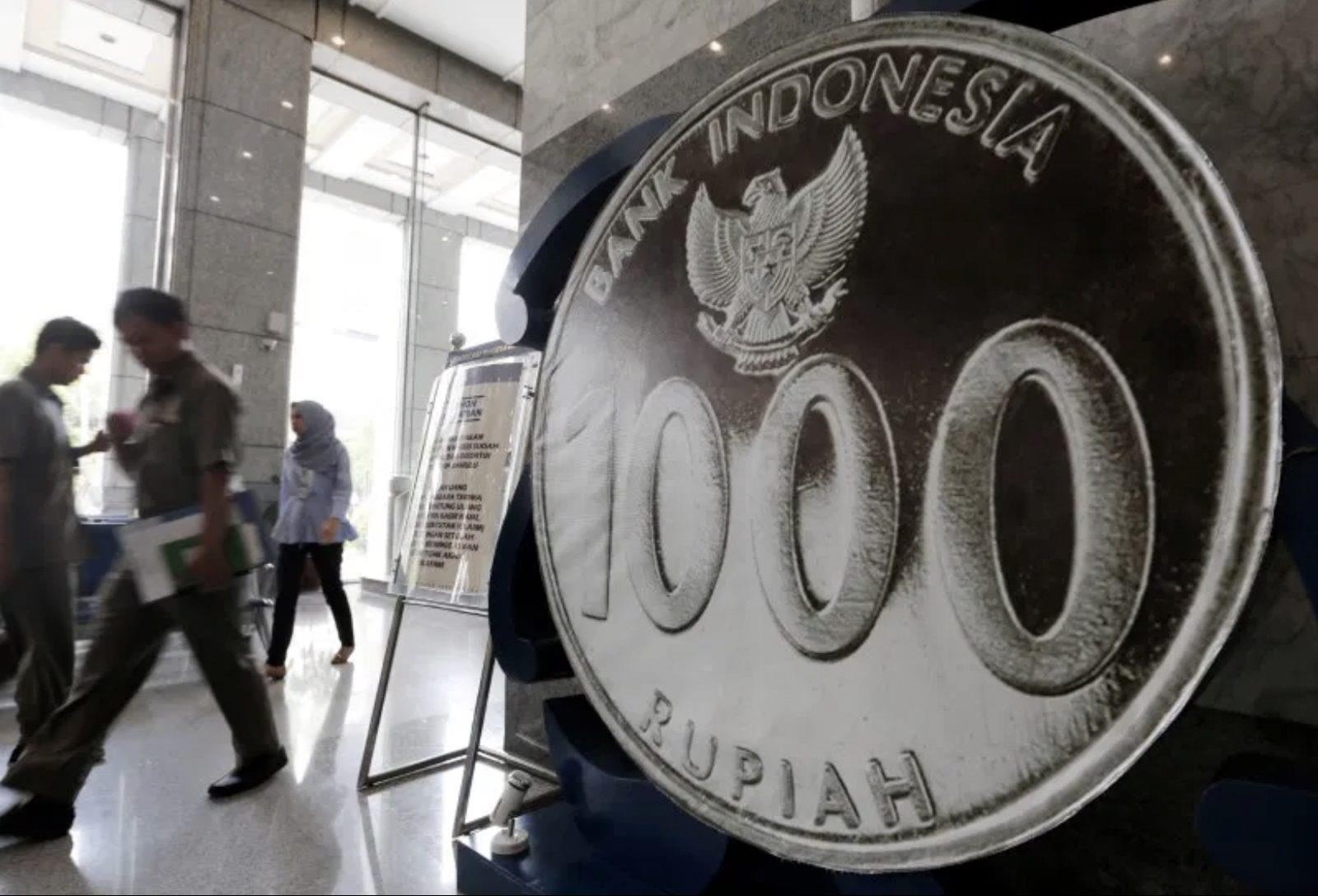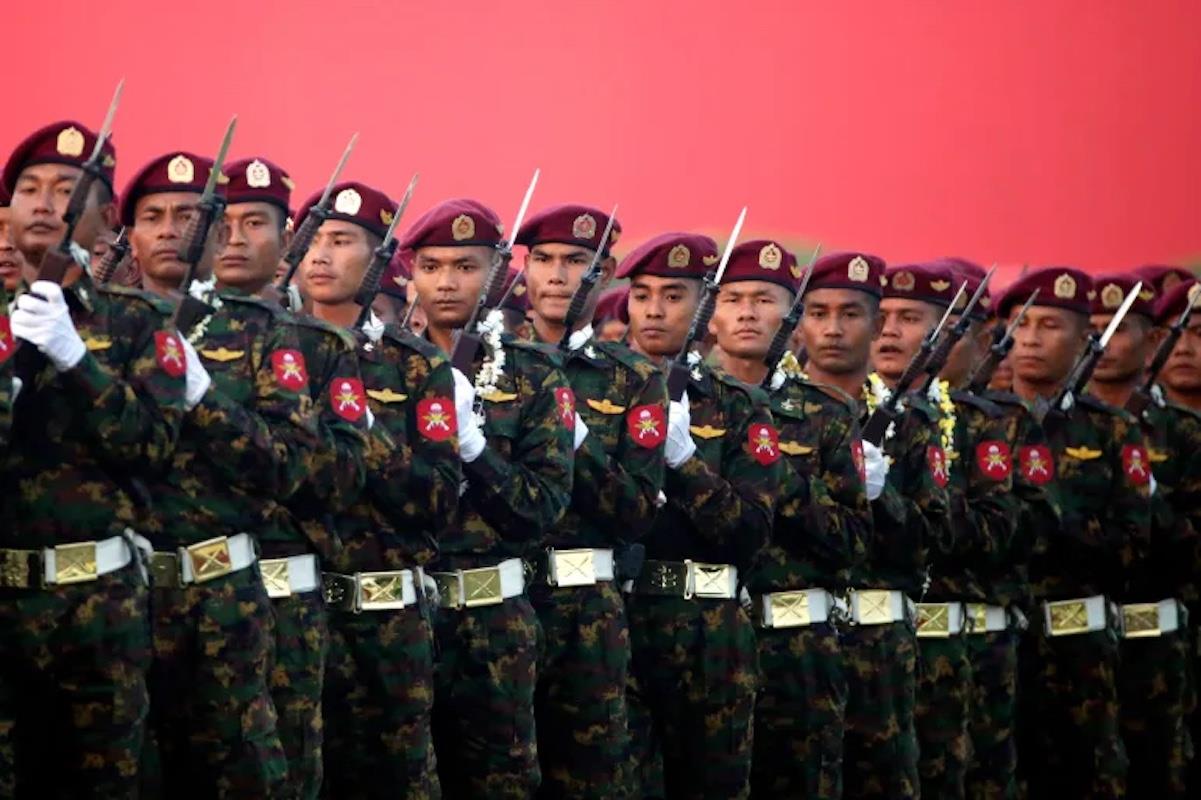Myanmar Military Surging To Clear A Path To Elections
Pushing already fragmentated resistance forces onto the back foot, the flurry of punch-backs from a military that just a year ago faced serial defeat and humiliation at the hands of resistance forces has made significant headway along key trade routes to China in northeastern Shan state and to Thailand in eastern Karen state.
At the same time, as the military, or Tatmadaw, regains the battlefield initiative, it is also pushing south into Karenni state, where resistance forces potentially threaten the capital Naypyitaw, while effectively lifting the protracted siege of Bhamo city in northern Kachin state with riverine reinforcements and a rapid series of operations to reassert control over the rubble.
Meanwhile, smaller military offensives into opposition-dominated rural zones have unfolded in Mandalay, Sagaing, Magway and Bago regions of central Myanmar.
There is no mystery or magic about why or how this seismic shift in battlefield dynamics has occurred. As exhaustive media commentary has made clear, the overarching“why” is the pressing need to win back territory after the cascading defeats of 2023 and 2024, and to reshape domestic and international perspectives of ground reality ahead of tightly controlled, junta-run elections, with the first round of a staggered process scheduled for December 28.
For the large majority of Myanmar's population, the extension of military rule from behind a civilian façade – almost certainly dominated by Tatmadaw frontmen from the Union Solidarity and Development Party (USDP) – offers no change: the military's determination to dominate national politics and the war it has triggered will both continue.
But for the interim State Security and Peace Commission (SSPC) regime – which in late July replaced the coup-installed State Administration Council (SAC) – and its key foreign backers, most notably China, the elections, however flawed, mark a crucial political turning point on a road to incremental stabilization and diplomatic respectability.
The“how” is no less simple. The current rapid-fire salvo of offensives stems from a year of regrouping, reinforcement and reorganization built on three pillars that have reshaped the war's tactical dynamics to the Tatmadaw's advantage.
First, new infusions of manpower following 16 months of conscription and the addition of at least 75,000 new troops into the army's order of battle have relieved critical shortfalls. Second, the growing sophistication and tactical flexibility of drone warfare, drawing on Chinese and Russian support and battlefield experience, have dramatically reinforced the already sharp increase in strikes by manned systems recorded since 2023.
Lastly, gradual improvements in the tactical integration of infantry, artillery and airpower facilitated by better intelligence, surveillance and reconnaissance (ISR) capabilities emerging from new drone technology have added a further edge to combat effectiveness.
Sustaining a surgeNotwithstanding these gains, any attempt to posit even a broad near-term trajectory of events against the backdrop of a still dauntingly fragmented and fluid conflict is a fool's errand.
What's worth highlighting, though, is that in the run-up to elections, the success or failure – both relative terms – of the Tatmadaw's rainy season surge will hinge on three core issues. At present, these are questions easier to define than answer, but over which clarity will undoubtedly emerge by year's end.
Latest stories
As Russian drones circle, NATO must learn Ukraine's lessons

Indonesia's ill-timed return to the financial brink

Poland border closure choking China-EU rail trade
The first question centers on the sustainability of a surge driven by political imperatives largely disconnected from military readiness and rolled out in multiple directions at the same time. To the extent Tatmadaw planners have even heard of the term, a calibrated“clear, hold and build” counterinsurgency strategy appears to have been, at best, an afterthought.
Sustainability hinges on manpower and logistics, both at risk of overstretch in any extended military campaign. And certainly over the last two months, Tatmadaw operations have revealed a striking shift in available manpower: Woefully understrength battalions of 100 or 150 troops typical in earlier years of the war have today been reinforced and integrated into tactical operations commands (TOCs) or columns of between 500 and 1,000 troops – closer to the real battalion strength of around 800 typical of modern armies.
While the sheer weight of numbers has undoubtedly been important, a large proportion of these troops – in some cases, reportedly a majority – are new conscripts with no combat experience and questionable enthusiasm for making Myanmar safe for coup leader and“acting president” Senior General Min Aung Hlaing.
Even allowing for some hyperbole from pro-resistance sources, growing evidence suggests the advances have come at a significant toll in casualties. It can be inferred that in newly reconstituted units that organizationally still lack cohesion, large losses will have a growing impact on morale.
A related manpower issue turns on the sustainability of conscription itself. A year and a half after it was rolled out as a more or less organized process, efforts to meet the monthly intake target of 5,000 men in the 18-35 demographic are becoming an increasingly difficult exercise in hard-knuckle press-ganging with families who can afford it paying between 3 and 8 million kyats (US$1,429-$3,334) to buy back their loved ones.
“When kids are due to be signed up, 60% flee before the next dawn,” noted one well-connected Yangon-based lawyer.“The other percentage pays off the authorities and continues to pay them monthly. We're now at the 17th (intake) batch, with some districts literally empty of suitably aged warm bodies and payoffs not likely to work anymore.”
The wide geographical extent of the Tatmadaw's offensive footprint also raises the risk of logistical overstretch. Campaigns to secure key trade arteries – from Mandalay to the China border at Muse and from the Karen state capital of Hpa-an to the Thailand border at Myawaddy – pose particular dangers.
Opening highways and securing towns mark a first step; holding them open for supply and trade in the face of inevitable guerrilla harassment will mean an open-ended drain on manpower and resources.
These challenges will only escalate if offensives seek to push further into resistance-held territory before elections. Plans released by the Union Election Commission in mid-September notably excluded resistance-held Hsipaw on the Mandalay-Muse highway, Hpruso in eastern Karenni state and Falam in western Chin state from a list of townships where inadequate security precludes holding elections – apparently implying that the townships would be retaken and elections held there.
More strikingly still, four townships in western Rakhine state – Thandwe, Taunggup, Gwa and Ann – were similarly not included in the no-elections list. Given the current balance of forces, the suggestion that the military could fight its way from central Myanmar back into Rakhine and eject the Arakan Army – Myanmar's largest and most powerful ethnic armed organization (EAO) – from around half of the state it mostly overran last year appears to border on the delusional but may yet be attempted.
Chinese munitions pressureThe second major question that will undoubtedly impact the war in the coming months turns on the extent to which Chinese efforts aimed at constricting the flow of munitions to northern EAOs and People's Defense forces (PDFs) in the Myanmar heartland will undermine opposition logistics.
Significantly, at an August 20 meeting in the Wa capital, Panghsang, United Wa State Army (UWSA) leaders informed their Ta'ang, Shan and Kokang ethnic allies that, as a result of Chinese pressure, the Wa would no longer be able to provide them with military and other material support.
Since well before the 2021 coup, the UWSA has played a crucial role as quartermaster for allied northern groups, supplying them with both Chinese munitions and hardware produced in Wa arms plants. Since the coup, these commercial instincts have also benefited opposition groups well beyond the immediate sphere of Wa influence in Shan state.
How far Chinese strictures on the notoriously independent Wa – whose very public August comments reflected clear unhappiness with the pressure applied from across the border – will translate into a real-world embargo on munitions flowing west remains to be seen.
While the UWSA is certainly in no position to directly flout Chinese diktats, it also has no interest in seeing its expanding political, economic and military presence across Shan state challenged by a resurgent Tatmadaw.
If, however, Chinese pressure and surveillance do succeed in significantly reducing the flow of munitions reaching western Shan and the national heartland beyond, the prospects for further Tatmadaw advances and entrenchment will rise accordingly.
Equally, any appreciable drop in the flow of munitions would also reduce the scope and impact of potential opposition offensives in November or December aimed at disrupting and discrediting the SSPC's electoral gambit – a problem that would only be exacerbated by increased expenditure of ammunition currently required to respond to the military's ongoing surge.
The Kyaukphyu factorThe third major unknown guaranteed to impact Myanmar's politico-military balance both before and well beyond December centers on the outcome of the battle for the western port of Kyaukphyu, where a well-entrenched and reinforced Tatmadaw garrison is currently besieged by a far larger Arakan Army force.
The geopolitical and financial criticality of the port complex, the coastal terminus of natural gas and oil pipelines that fuel much of southwest China's economy and site of multi-billion-dollar Chinese deep-sea harbor and special economic zone (SEZ) projects, cannot be overstated.

Sign up for one of our free newsletters
-
The Daily Report
Start your day right with Asia Times' top stories
AT Weekly Report
A weekly roundup of Asia Times' most-read stories
Since at least June, the Arakan Army, estimated to number between 40,000 and 50,000 regular troops, has evidently prioritized seizing Kyaukphyu over alternative objectives, namely the state capital of Sittwe or territory to the east in the heartland regions of Magway, Bago and Ayeyarwady.
Targeting Kyaukphyu has also directly challenged China's preference for the Arakan Army, along with its so-called“Three Brotherhood” allies – the Ta'ang National Liberation Army (TNLA) and Kokang Myanmar National Democratic Alliance Army (MNDAA) – to agree to ceasefires with the junta.
Notwithstanding the Arakan Army's steamroller advance across its home state in 2024, the outcome of the battle for Kyaukphyu is hardly a foregone conclusion.
In what is likely to be the bloodiest and perhaps most consequential confrontation of the war to date, the military's garrison of at least 3,000 troops benefits from resupply and potential reinforcement by sea and air in addition to fire support from offshore naval assets and the air force.
On the other side of the ledger, the Arakan Army is understood to have committed at least 10,000 troops to the theater, most of whom possess a level of experience and motivation that the junta's conscript-heavy battalions simply cannot match.
The Arakan Army has also timed its campaign to coincide with monsoon months that inundate coastal Rakhine more powerfully than any other region of Myanmar, with persistent low clouds and near-daily downpours sharply reducing the effectiveness of aerial reconnaissance and air strikes.
If the port were to fall to the Arakan Army in the coming months, the consequences would be profound. In addition to the economic losses the SPCC would suffer, the capture of the port and adjacent naval base would deal the regime a humiliating defeat just before the elections.
It would also fundamentally reset the relationship between the Arakan Army and the Chinese government, which, in the interests of maintaining the economically crucial flow of oil and gas, would have little choice but to renegotiate its terms of business with the Arakan Army's Arakan Peoples' Revolutionary Government (APRG).
It is also reasonable to infer that Beijing would warn the Tatmadaw against any retaliatory bombings of Kyaukphyu that could harm its economic interests.
Indeed, if the Arakan Army were to capture and secure the port, it might well be inclined to accept a Chinese-brokered ceasefire that allows it to regroup and reassess its options as a national kingmaker from an even stronger position.
Sign up here to comment on Asia Times stories Or Sign in to an existing accoun
Thank you for registering!
An account was already registered with this email. Please check your inbox for an authentication link.
-
Click to share on X (Opens in new window)
X
Click to share on LinkedIn (Opens in new window)
LinkedIn
Click to share on Facebook (Opens in new window)
Facebook
Click to share on WhatsApp (Opens in new window)
WhatsApp
Click to share on Reddit (Opens in new window)
Reddit
Click to email a link to a friend (Opens in new window)
Email
Click to print (Opens in new window)
Print

Legal Disclaimer:
MENAFN provides the
information “as is” without warranty of any kind. We do not accept
any responsibility or liability for the accuracy, content, images,
videos, licenses, completeness, legality, or reliability of the information
contained in this article. If you have any complaints or copyright
issues related to this article, kindly contact the provider above.
Most popular stories
Market Research

- Excellion Finance Scales Market-Neutral Defi Strategies With Fordefi's MPC Wallet
- BILLY 'The Mascot Of BASE' Is Now Trading Live On BASE Chain
- Pascal And Treehouse Partner On Proof Of Concept To Pioneer Smart Clearing For Decentralized Fixed Income Products
- XXKK Exchange Strengthens AML And KYC Systems To Elevate Compliance Standards
- Kucoin Partners With Golf Icon Adam Scott As Global Brand Ambassador
- TOKEN2049 Singapore Breaks Records: 25,000 Attendees At The World's Largest Web3 Event




















Comments
No comment